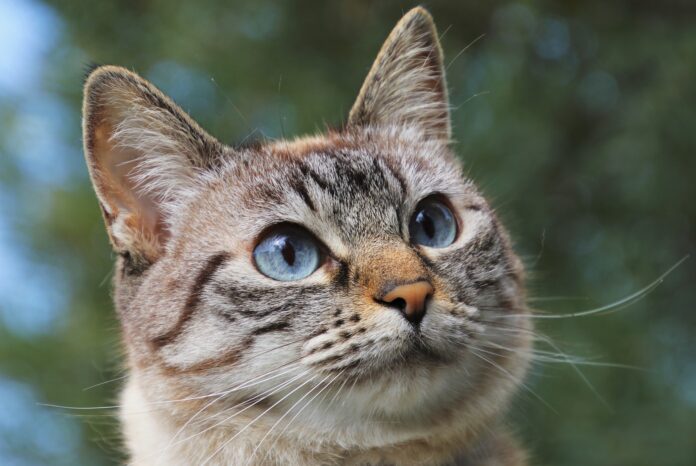Correct way that we don’t know feeding to a cat. Consult your veterinarian to modify your cat’s diet. Your cat’s dietary nutrition is important, and the animal’s health could be affected if you make an unwise change in its diet. Make an appointment with your veterinarian and ask for advice on feline nutrition. See if the vet recommends feeding your cat a natural or raw diet and ask what specific foods and amounts they suggest giving your cat. Avoid serving dry food to your cat. Although most commercial cat foods are made from dry kibble, they actually contain relatively little nutritional value for cats. Dry kibble contains almost no water, gives cats excessive amounts of carbohydrates, and often contains vegetable protein instead of the animal protein that cats need to stay healthy. The dry kibble is also highly processed and contains few natural ingredients. If you want to give your cat natural food, the first step is to replace it with wet food.
Correct way that we don’t know feeding to a cat – Introduce your cat to wet food
If your cat only eats dry kibble, it’s time to switch to wet food. Don’t leave wet food on your cat all day; give them two or three meals a day. If the cat does not eat the wet food within 30 minutes, take the food back. To make the transition easier, you can start by mixing a moderate amount of dry food into the wet food, then gradually phase out the kibble.
Quality
You can find high quality wet food to buy at your local pet store. Talk to the staff or owner and ask for recommendations on a wet cat food. Also read the nutrition label on a few different brands of wet food. Select the option that provides high protein, low carbs and lots of vitamins. If possible, choose a low-grain wet food.
Correct way that we don’t know feeding to a cat – Feed your cat wet cat food
A high quality canned cat food will contain protein and healthy nutrients for your cat. Although canned wet foods go through some degree of processing, it’s far less than the large amounts of processing that go into dry kibble. Wet food is also low in carbs, which will benefit your cat’s nutrition. A cat’s diet should be very low in carbohydrates, with carbohydrates making up only 1-2% of the total diet. Cats living in the wild get much of their water from the food they eat because animal meat has a high water content. Feeding your cat a high-quality wet food can provide her with a natural way to stay hydrated.
Health Risks of Canned Tuna for Cats
First, it should be noted that too much tuna (fresh or canned) can be bad for your cat. Tuna alone is not an appropriate food that can provide a good balance of nutrients for your cat. Additionally, tuna is high in mercury, which can lead to mercury poisoning in your cat despite its rarity. Symptoms of mercury poisoning in cats include loss of coordination and balance, difficulty walking, etc.
Tuna is exceptionally appealing to cats, and if fed regularly, they may avoid eating their usual cat food and prefer canned tuna instead. Don’t coddle them too much, as they can become picky eaters with feeding difficulties.
Health Benefits of Canned Tuna for Cats
As a treat, tuna can be healthy for most cats, as long as it is eaten in moderation. Tuna is a low carbohydrate source, rich in protein and essential omega-3 fatty acids EPA and DHA which improve and maintain the skin and coat. These acids help improve conditions such as allergies, arthritis and skin diseases.
before feeding them
The safest way to feed your cat canned tuna is to ask your veterinarian. It is important to always consult your veterinarian when adding a new addition to your diet. Cats require stability in their routine, including consistency in their diet. So if canned tuna is something you might not be able to eat for some reason, it’s best to know that ahead of time.
Correct way that we don’t know feeding to a cat – when you feed them
Always feed your cat canned tuna in water. Don’t give them any type of canned tuna with flavorings like added salt or tuna in oil. Also remember that all complementary treats, including tuna, should be less than 10% of your cat’s daily calorie intake. The other 90% should be high quality, suitable cat food. Avoid giving them too much tuna. Try to limit tuna treats to 2-3 times a week.







